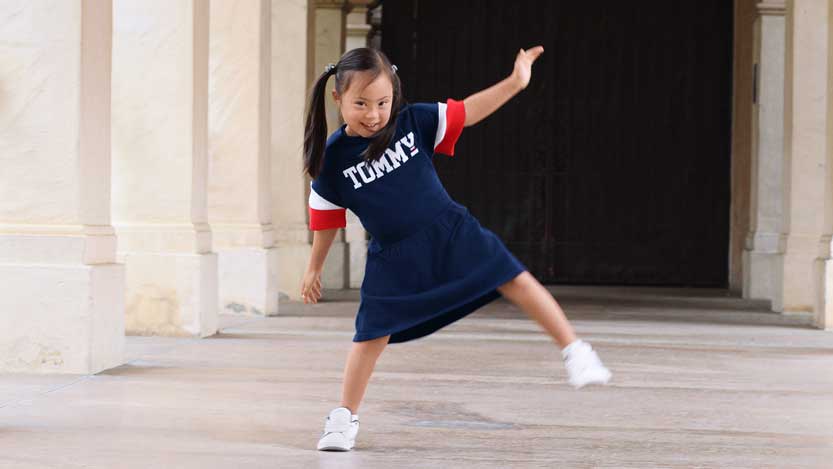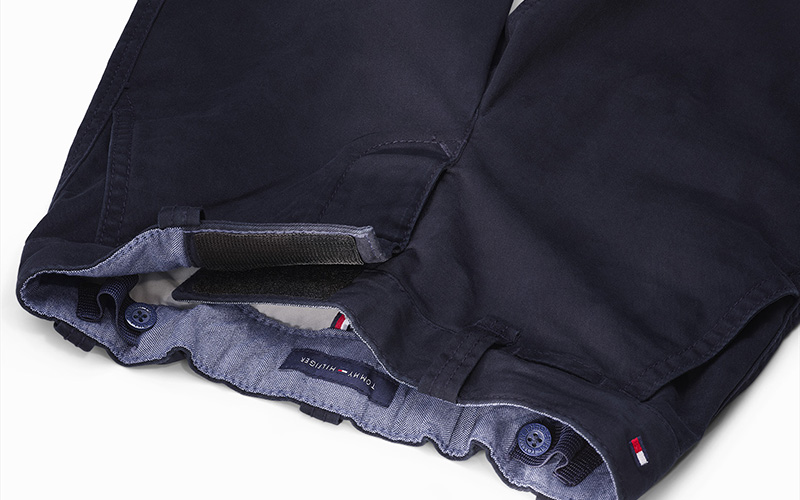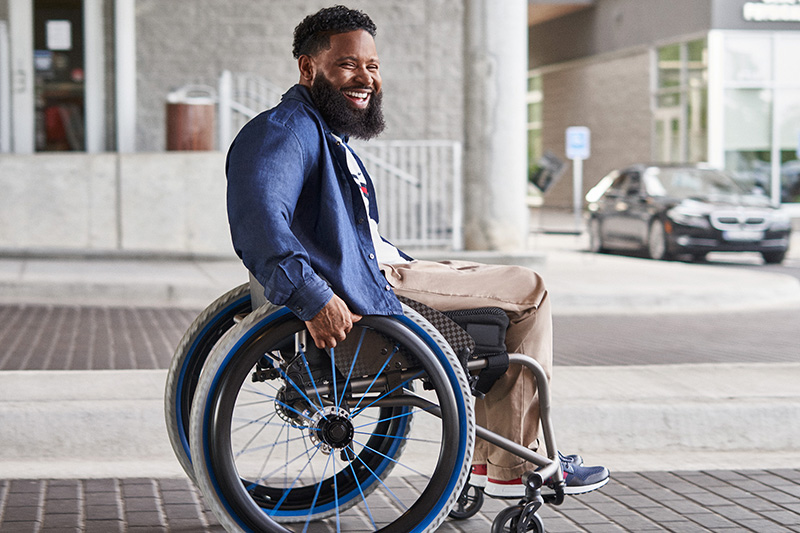Guide to growth: Tommy Hilfiger finds growth through accessibility

Think about something you do every day, like getting dressed for work. These days, as a lot of us are working from home, that might just entail throwing a sweatshirt over pajamas and commuting one room over to sit at our home offices. Getting dressed is something we all do, and we likely don’t think twice about it, but what if you did not have the use of your arms? Or what if you were in a wheelchair? Or what if you lost your dexterity from a temporary health condition or the challenges of aging? What would getting dressed in the morning be like for you?
That’s something Sarah Horton, Senior Director of Innovation and Integrated Marketing at Tommy Hilfiger, thinks about a lot; not only because she works for a leading global fashion brand, but because she is the Global Marketing lead for Tommy Adaptive — Tommy Hilfiger’s fashion clothing line for people with disabilities and the families that love them. “Everyone has the right to get up and get dressed and express themselves through what they wear. You might not think you do that every day, but what you wear can represent who you are as a person,” said Horton.
Companies like Tommy Hilfiger are leading their industries in thinking more inclusively about the people they serve. They see their role in society to be delivering meaningful experiences for all people as a core value, and it is helping them differentiate and innovate in ways they never knew were possible.
Accessibility is the mother of invention
Accessibility in marketing and product design is so important. A disability can be permanent, temporary due to an injury, or situational — such as someone holding a child while typing on their computer. We call this the Persona Spectrum in inclusive design. Thinking of people who use your product, and their varying abilities, leads to innovation. Did you know Short Messaging Service (SMS) text was originally created to help people with hearing impairments, or that closed captioning and touch screens were created and designed for people with disabilities? Now they are used by all. Consider your customer experiences with this spectrum in mind.
Designing an online and offline experience in today’s world, optimized for people with disabilities, can benefit us all.
— MJ DePalma, Head of Global Multicultural & Inclusive Marketing, Microsoft Advertising
When you caption a video, you are not only helping those who cannot hear, but you might also be helping the working-from-home parent that needs to turn off audio because they need to let their newborn baby nap next to them as they attend a meeting. Captioning can also help spouses who share a workspace with each other.
Learn more: Over 1 billion people your marketing may be overlooking today
Accessibility is a game changer

Accessibility is an incredible market opportunity. As Horton explained, for many brands who consider the customer journey of people with disabilities, it can provide new ideas and create first-mover advantages in a growth area. There are over one billion people today with a disability,and the total after-tax disposable income for working-age people with disabilities is about $490 billion;when you consider their families and communities, the number of people who could purchase goods and services for this population more than doubles.
Tommy Hilfiger has seen remarkable results in just the first few years since launching their Tommy Adaptive line.
80% of customers who purchased from our Tommy Adaptive line were new. That led to additional purchases. Just because they bought an adaptive shirt didn't mean they needed adaptive pants.
— Sarah Horton, Senior Director of Innovation and Integrated Marketing, Tommy Hilfiger
Wunderman Thompson, a global agency, and as they like to say, “a growth partner – part agency, part consultancy, part technology company,” was hired by Sarah and the Tommy Hilfiger team to launch Tommy Adaptive. Christina Mallon, Global Head of Inclusive Design at Wunderman Thompson, shared that a lot of clients are concerned they are designing for a “niche audience.” They are asking, “What is the net effect; am I impacting my entire customer base?” Mallon answered from experience with an emphatic “Yes!” “When you design for people with disabilities, you also reach the people who know someone, love someone. They share it. They shop for them.”
Horton said that Tommy chose Wunderman Thompson because they understood the realities of developing with accessibility in mind. “You constantly pivot and are learning as you go,” stated Mallon.
You throw out the rule book and you go deep to understand the entire journey of the customer with a disability. And what comes from that is incredible ‘game-changing’ products and solutions.
— Christina Mallon, Global Head of Inclusive Design, Wunderman Thompson
Start the journey to be accessible to all

The most important learning that came from the “dream team” collaboration between Wunderman Thompson and Tommy Hilfiger was to conduct more qualitative than quantitative research. It began with small group conversations with their target customers. “These consumers had never really been served by a clothing brand,” recounted Horton. Tommy had to learn everything from the terminology they used, and the way to show and describe their product, to how to drive awareness through search advertising. Through ongoing conversations with people with disabilities, Tommy and Wunderman Thompson explored every facet of their purchase journey —from how they found out about the clothing line to their in-store and packaging experiences. The “hanger-to-body” experience, as Horton put it, was critical to ensure they served all the needs of these consumers and not leave any aspect out.
Ultimately, what it comes down to is having clients “with an open mind,” shared Mallon. “You need a growth mindset, and you want to learn. You design with, not for, your customer, and you develop empathy by working with the community — kids, caregivers, parents, grandparents. Companies that think about the experience for all communities are the ones that will be future-proofed.” If you want to grow your business, then it really starts with genuine, deliberate curiosity about the lived experiences of your customers, including people with disabilities.
If you’re just starting your journey to explore and create more accessible products and customer experiences, check out the interview with MJ DePalma, Horton, and Mallon in the Inclusive Marketing Lab segment of the latest episode of The Download. We’ll continue to highlight their experiences and provide guidance and practical steps with more articles and interview clips in our blog.
Learn more about inclusive strategies and opportunities offered by Accessible Marketing
Check out these additional Microsoft Advertising resources:
Download the Microsoft Advertising Marketing with Purpose Playbook for detailed guidance on accessibility strategies and inclusion’s impact on advertising performance, plus free open-source tech to help you evaluate and fix your website for accessibility.
Use our key takeaways from Modern Marketing is Accessible Marketing webcast to understand the business case for inclusive design and accessibility in your marketing, advertising, and overall customer experience.
Download our Modern Marketing is Accessible Marketing eBook for comprehensive tips and checklists on how to build accessibility into your marketing to reach, resonate with, and serve more people.
Stay up to date with our latest growth strategies automatically by signing up for the biweekly Microsoft Advertising Insider newsletter.
SEO Company in lucknow
Comments
Post a Comment